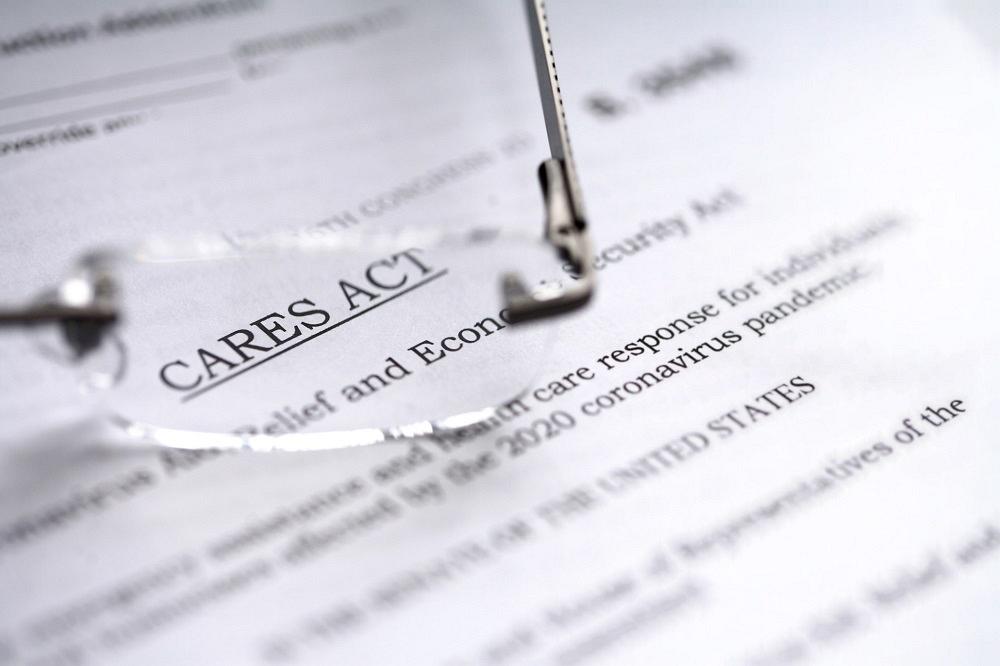National Managing Director
- FMA
- The Fabricator
- FABTECH
- Canadian Metalworking
Categories
- Additive Manufacturing
- Aluminum Welding
- Arc Welding
- Assembly and Joining
- Automation and Robotics
- Bending and Forming
- Consumables
- Cutting and Weld Prep
- Electric Vehicles
- En Español
- Finishing
- Hydroforming
- Laser Cutting
- Laser Welding
- Machining
- Manufacturing Software
- Materials Handling
- Metals/Materials
- Oxyfuel Cutting
- Plasma Cutting
- Power Tools
- Punching and Other Holemaking
- Roll Forming
- Safety
- Sawing
- Shearing
- Shop Management
- Testing and Measuring
- Tube and Pipe Fabrication
- Tube and Pipe Production
- Waterjet Cutting
Industry Directory
Webcasts
Podcasts
FAB 40
Advertise
Subscribe
Account Login
Search
How U.S. Congress is helping manufacturers survive the pandemic
From CARES Act to other grants, loans, and tax relief programs during COVID-19 crisis
- By Dean Zerbe and Tracy Lustyan
- May 29, 2020
- Article
- Shop Management

The CARES Act is just one piece of legislation that helps businesses get some relief from the economic disaster of the COVID-19 epidemic. Other grants, loans, and tax relief programs exist and are available to businesses willing to do some investigation and, in some cases, innovation. Getty Images
There’s no denying that the coronavirus pandemic is taking a vast toll on the world from both health and economic standpoints. Recent numbers show that the U.S. has more than 22 million unemployed as businesses across the country are struggling to make payroll along with other necessary business costs. Congress and other agencies, including the IRS, have stepped in to try to alleviate pressure from U.S. individuals and businesses alike, extending tax filing deadlines and injecting billions of dollars in available loan funds into groups like the Small Business Administration (SBA).
Triple Play: CARES, EIDLs, and EEIGs
Most notable is the recently passed Coronavirus Aid, Relief, and Economic Security (CARES) Act, which was signed into law on March 27. The historic $2 trillion relief bill was the third phase of relief passed by Congress and included a variety of provisions aimed at keeping businesses operational. The centerpiece of this legislation from a business standpoint was the establishment of the Paycheck Protection Loan Program that, run through the SBA, offered $349 billion in loan commitments for companies. These loans, for up to $10 million, can be used to cover business costs including compensation, sick leave or vacation pay, retirement benefits, and insurance premiums.
Other applicable provisions include Economic Injury Disaster Loans, which are loans for up to $2 million for businesses with 500 or fewer employees. Emergency funds also have been established for businesses seeking a quicker infusion of cash through Emergency Economic Injury Grants for up to $10,000, a program also administered by the SBA.
Although the White House has announced that funds for the program have already been depleted, businesses should still consider applying as Congress works to bring more funds to the program and as larger corporations are beginning to return already claimed funds.
What’s in the CARES Act?
The CARES Act also allows for payroll tax deferral, postponing taxes due for employers. Businesses can defer payroll taxes incurred from March 27, 2020, to December 31, 2020. According to the IRS, these taxes are due if half of the amounts deferred are paid by the end of 2021 and the remainder paid by 2022.
Further, companies are potentially eligible for other types of relief through the legislation, including:
- An employee retention credit.
- Flexible use of retirement funds to cover business costs.
- Net operating loss carrybacks.
- Payroll credits for required sick or family leave.
Although the provisions of the CARES Act are welcome, they can run out quickly, and some companies aren’t able to wait until Congress can establish the next phase of relief. Luckily, some provisions established during previous recessions and unrelated to the CARES Act already exist in the tax code that can help businesses access capital and flexibility.
One that remains is the Research and Development Tax Credit, which was included in the Economic Recovery Tax Act of 1981 to increase liquidity for businesses while encouraging domestic hiring to compete on a global scale. Congress has continually renewed and updated the provision to maximize its economic impact and expand the benefit it provides to more industries and businesses. When the dot-com bubble burst in 2001, causing a recession in the early 2000s, Congress decided to broaden the credit to help as many companies as possible. In 2003, when unemployment reached its highest level of the recession, Congress removed the biggest barriers to claiming the credit, including the “Discovery Rule” (which required the taxpayer to introduce innovations that were new to the world). Now, taxpaying companies need only introduce activities that are new to them.
The R&D credit is now applicable to a range of industries, from software and tech to agriculture. To qualify for the wage-based credit, a company simply needs to be able to show the development or design of a new product or process, or the enhancement of an existing product or process. If that sounds broad, that’s because it was designed to be.
Businesses across the country are looking anywhere they can for economic relief, and rightly so. This pandemic has had a devastating impact on the world, but there are options for companies seeking help.
And although Congress is doing what it can now to provide necessary relief to U.S. taxpayers, previously established government incentives are still available to help keep American businesses strong.
About the Authors


About the Publication
subscribe now

The Tube and Pipe Journal became the first magazine dedicated to serving the metal tube and pipe industry in 1990. Today, it remains the only North American publication devoted to this industry, and it has become the most trusted source of information for tube and pipe professionals.
start your free subscription- Stay connected from anywhere

Easily access valuable industry resources now with full access to the digital edition of The Fabricator.

Easily access valuable industry resources now with full access to the digital edition of The Welder.

Easily access valuable industry resources now with full access to the digital edition of The Tube and Pipe Journal.
- Podcasting
- Podcast:
- The Fabricator Podcast
- Published:
- 04/16/2024
- Running Time:
- 63:29
In this episode of The Fabricator Podcast, Caleb Chamberlain, co-founder and CEO of OSH Cut, discusses his company’s...
- Trending Articles
Team Industries names director of advanced technology and manufacturing

3D laser tube cutting system available in 3, 4, or 5 kW

Corrosion-inhibiting coating can be peeled off after use

Zekelman Industries to invest $120 million in Arkansas expansion

Brushless copper tubing cutter adjusts to ODs up to 2-1/8 in.

- Industry Events
16th Annual Safety Conference
- April 30 - May 1, 2024
- Elgin,
Pipe and Tube Conference
- May 21 - 22, 2024
- Omaha, NE
World-Class Roll Forming Workshop
- June 5 - 6, 2024
- Louisville, KY
Advanced Laser Application Workshop
- June 25 - 27, 2024
- Novi, MI


























